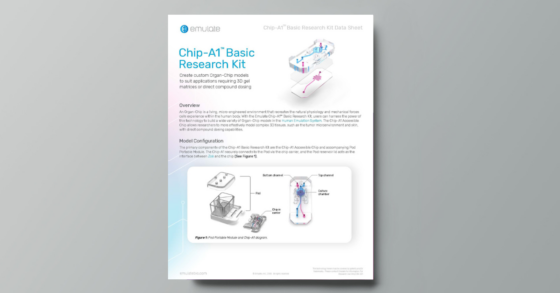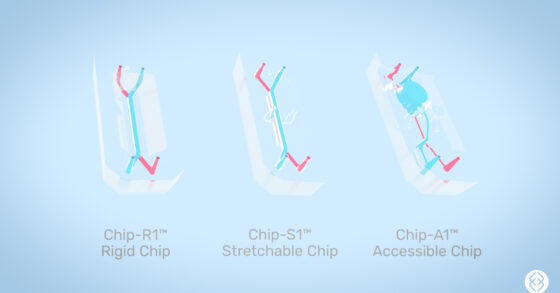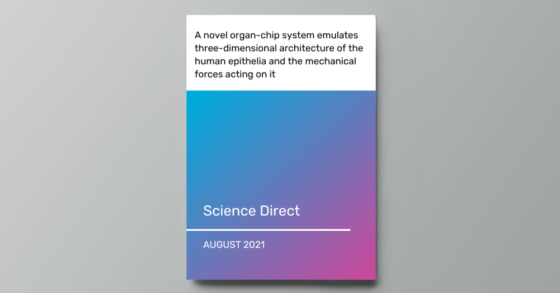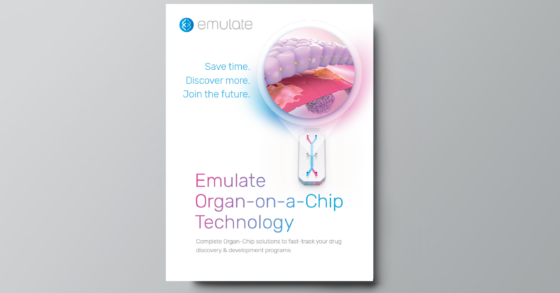organ-Chip Consumable
Chip-A1™ Accessible Chip
Model complex 3D tissues with the ability to directly apply topical or aerosolized drugs.
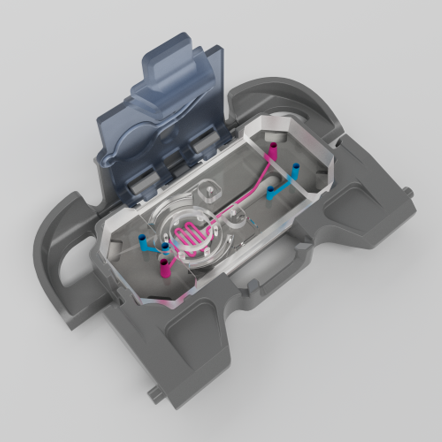
Overview
Expanding the applications of Organ-on-a-Chip technology
Chip-A1 features an accessible culture chamber that enables users to create thick gel-based models for a wide variety of applications, including tumor microenvironments, skin, and lung models.
Key Benefits
Enhanced 3D modeling
The accessible culture chamber enables users to create gels up to 3 mm thick, making it ideal for integrating stroma and creating stratified epithelia, such as tumor microenvironments or skin models.
Topical & aerosolized drug administration
The hinged lid provides users direct access to the culture chamber for topical or aerosolized drug application.
Tissue-vascular interface
The serpentine design of the bottom channel maintains the ability to create tissue-vascular or air-liquid interfaces.
Full integration into the Human Emulation System
Chip-A1 is fully compatible with the Human Emulation System, which automates the culture conditions, including fluid flow in both channels and cyclic stretch.
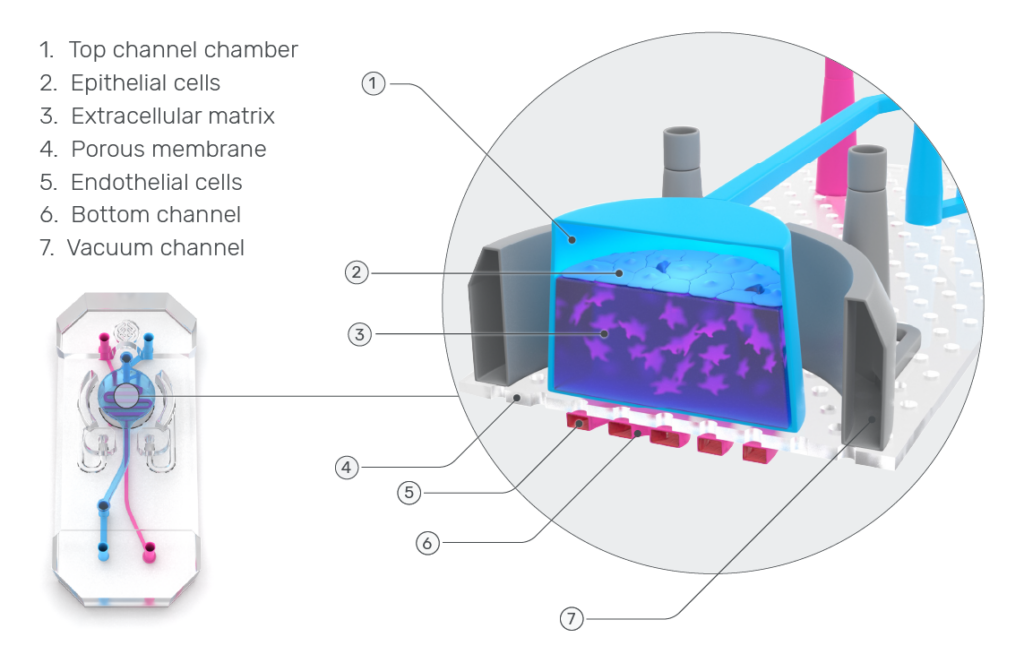
Overview Video
Get to Know Chip-A1
Learn how the accessible culture chamber of Chip-A1 enables users to create hydrogels or scaffolds up to 3 mm thick while providing direct access to the tissue for topical or aerosolized treatments.
Chip-A1 Use Cases
Barrett’s Esophagus-Chip
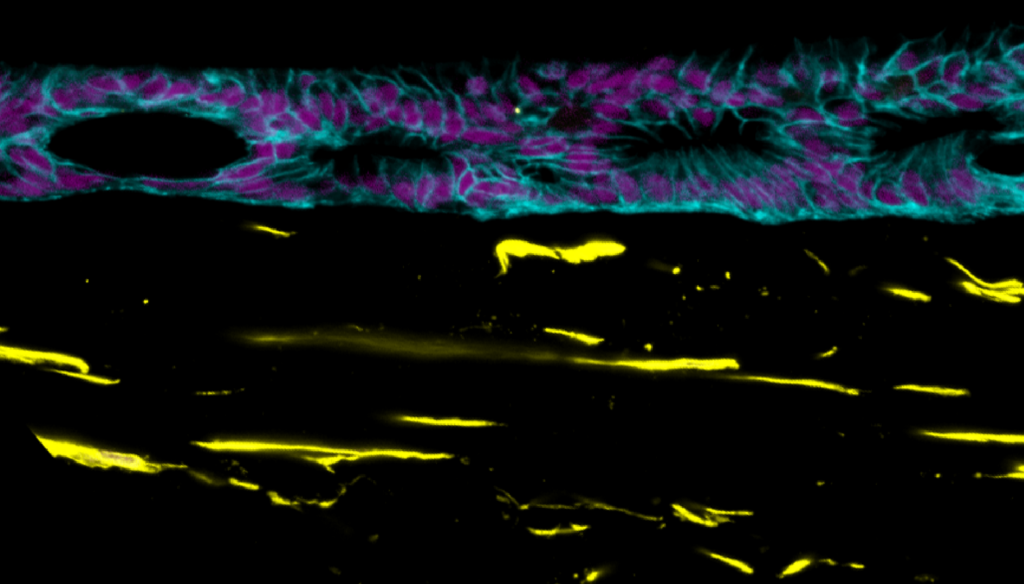
Understanding Mechanisms of Esophageal Cancer Progression
In their online article titled “Epithelial-Stromal Interactions in Barrett’s Esophagus Modeled in Human Organ Chips,” researchers from the Wyss Institute using a prototype of Chip-A1 found that the chip offered a new platform for studying epithelial-stromal interactions and broader underlying mechanisms associated with esophageal cancer progression. The team also reported that this model could potentially serve as a tool for personalized drug-response assessments between different patients or genetic subpopulations.
.
Alveolus Lung-chip
Improving the Functionality of In Vitro Alveolus Models
A prototype of Chip-A1 was used to create an Alveolus Lung-Chip consisting of an epithelial layer, a fibroblast-embedded gel, and a vascular channel. When cultured under an air-liquid interface with the application of cyclic stretch, this model demonstrated superior functionality over static culture as measured by tissue-specific markers, surfactant C, and LPS-mediated inflammatory response.
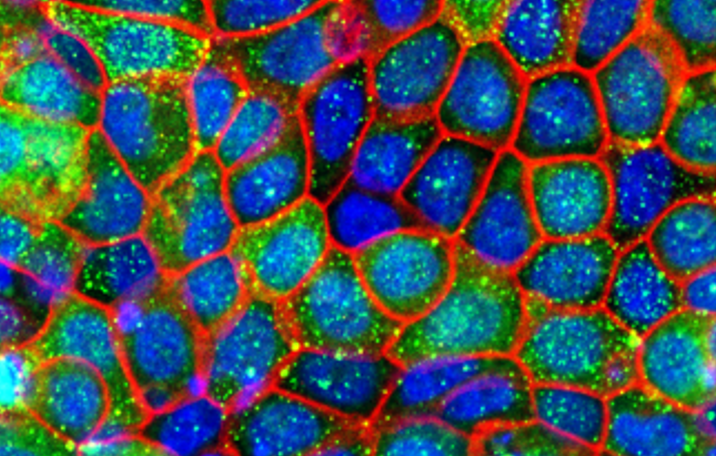
.
Skin-Chip

Creating a Multi-Stratified Skin Epithelium
A Chip-A1 prototype was also used to create a Skin-Chip model consisting of keratinocytes seeded on a fibroblast-embedded hydrogel coated with collagen IV. The assembled chip was then cultured under an air-liquid interface for 15 days, which resulted in differentiation into a multi-stratified epithelium. The Skin-Chip displayed characteristics consistent with a stratified epidermis, containing cuboidal basal cells, squamous suprabasal keratinocytes, and a superficial stratum corneum.
.
Watch the webinar
Improving In Vitro Cancer Modeling with Chip-A1
Learn more about these use cases through our on-demand webinar that explains why Chip-A1 improves in vitro modeling of epithelial-stromal interactions and tumor microenvironments, with an in-depth case study of how Chip-A1 unlocked a new approach for studying mechanisms of esophageal cancer progression.

.
Compatible with Zoë-CM2® Culture Module
The Zoë-CM2 Culture Module is a versatile system for model development & target validation. Capable of culturing up to 12 Organ-Chips at a time, the user-friendly platform gives researchers a window into the inner workings of human biology.
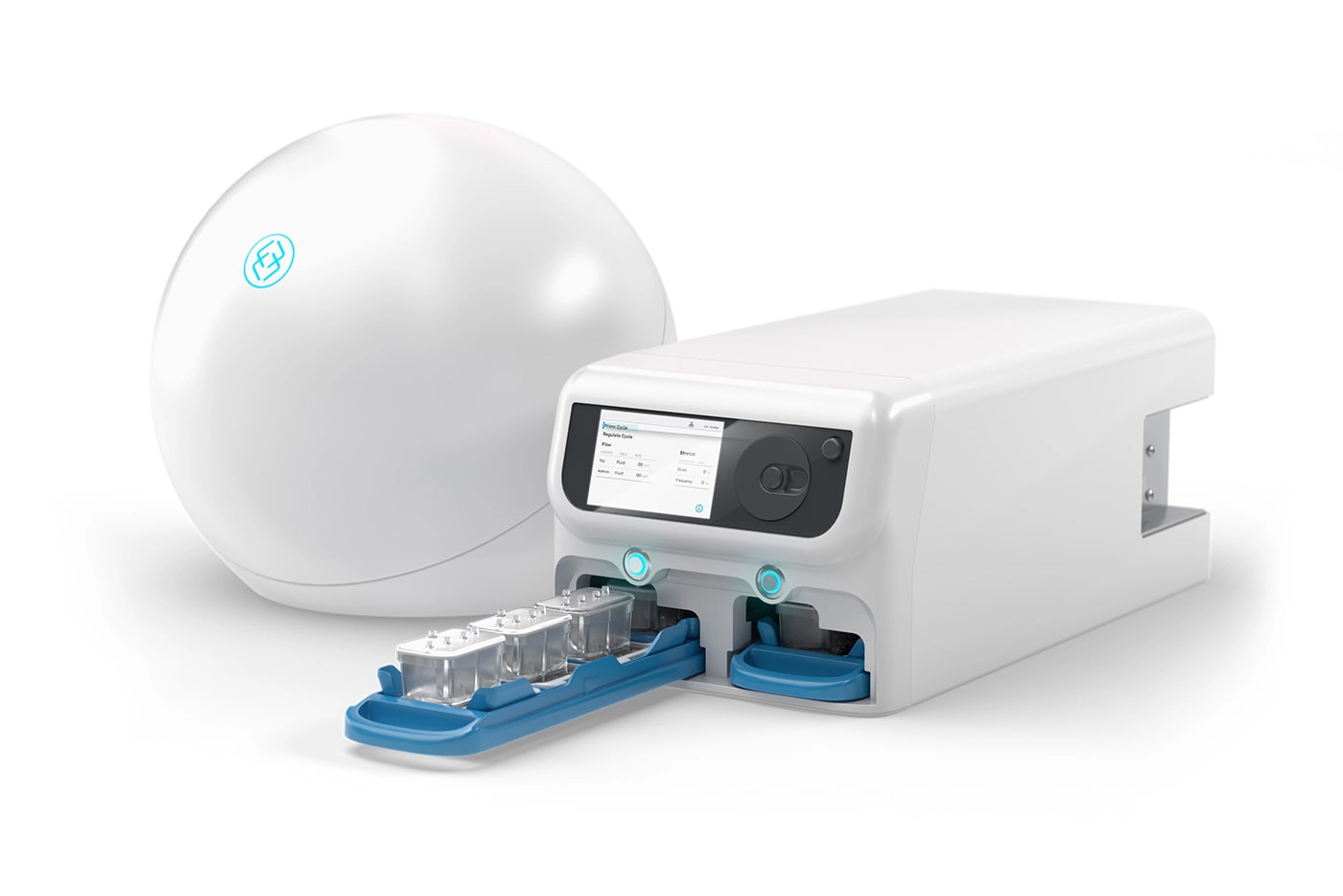
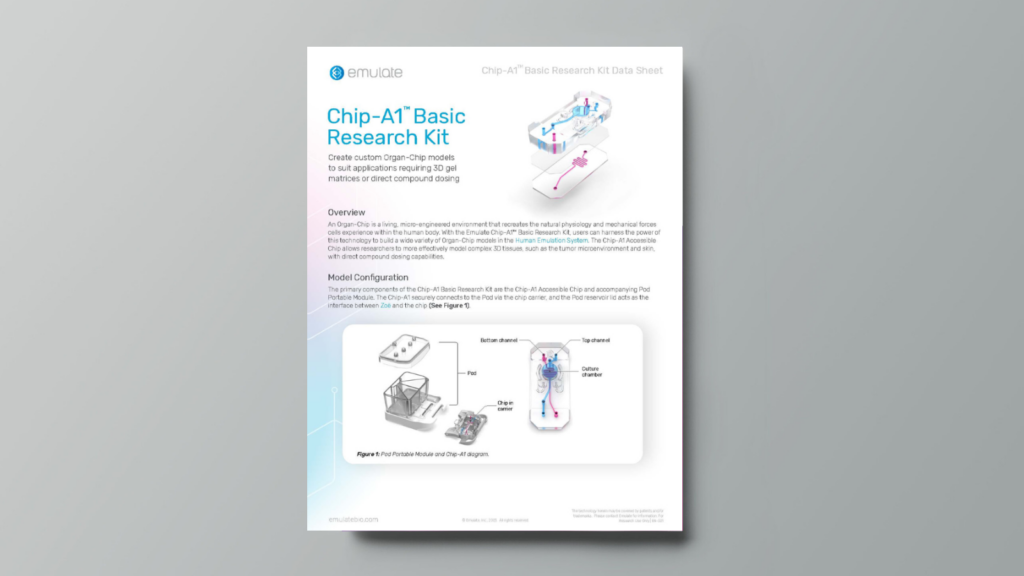
FEATURED RESOURCE
Data Sheet: Chip-A1™ Basic Research Kit
With the Emulate Chip-A1 Basic Research Kit, users can harness the power of Organ-on-a-Chip technology to build a wide variety of Organ-Chip models in the Human Emulation System.


